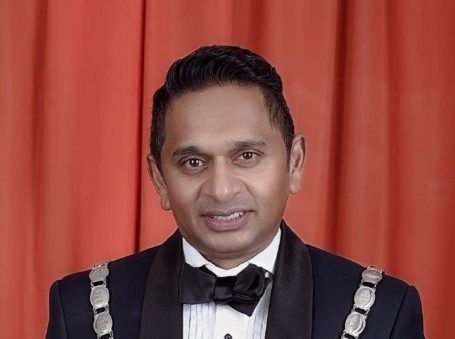The South African Institution of Civil Engineering (SAICE) inaugurated its 114th president, Sundran Naicker, at The Venue, Melrose Arch in Johannesburg on 10 November 2016.
Naicker, a director at Nyeleti Consulting, delivered his presidential address during an illustrious event with various champions of the infrastructure industry, government officials, engineering clients from both the private and public sectors, as well as SAICE past presidents and other members, attending.
In his address titled Code of Best Practice for Civil Engineering Tertiary Education
(Code of Best Practice),Naicker explained that through his 20-year involvement with SAICE, he has realised the fundamental need of giving more attention to youth, graduate engineering practitioners and higher education.
One of the strategic goals is to set up codes of best practice for civil engineering departments at universities and universities of technology.
He said, “This goal was initiated two years ago, but the recent events in relation to #Feesmustfall and funding of university education, has demonstrated the relevance of this initiative.”
Naicker emphasised, “My single commitment on a deliverable for 2017 is the Code of Best Practice for Civil Engineering in Tertiary Institutions.”
Naicker went on to highlight that the Engineering Council of South Africa (ECSA) has minmum requirements for universities and universities of technologies (UoT) and it is general for all disciplines of engineering.
The accreditation is done in accordance with the Engineering Professions Act, which make provision for professional registration of qualifications from accredited institutions. He explained, “SAICE’s process is geared towards fostering excellence at our institutions.”
Both the technical and academic universities’ head of departments (HoD) gave overwhelming support for the generation of the Code of Best Practice, which would give all institutions dealing with engineering education a guideline and benchmark to maintain and elevate world-class engineering schools in South Africa.
This document will also assist faculties of engineering to:
– Motivate for additional funding
– Provide less experienced academics with a reference document from which to build their profiles, and that of their departments
– Possibly become the benchmark for the Department of Higher Education.
He provided some statistics regarding the Higher Education Management Information, maintained by the Department of Higher Education. In 2013 there were 92 000 enrolments for first-year engineering at the various major academic institutions.
Approximately 2 400 students graduated with a civil engineering qualification in the same year. Of the various academic institutions from where students graduated, a number had a 100% employment rate, and some had a 60% employment rate, but a substantial number of them simply did not track the employment of graduates.
“The question is,” according to Naicker, “what are the successful institutions doing right, and how this could be replicated to elevate the standards at the various other institutions.” He further said that industry’s perception is clear in that graduates from particular institutions are considered to be better qualified than their counterparts from other institutions.
“This perception lends itself to an analysis of which institutions enjoy funding support from the private sector, which students are preferred for bursaries, etc.”
In order to address this question, SAICE conducted a nation-wide survey among a representative sample of companies and public sector bodies. There were 320 respondents.
The survey clearly indicated industry’s preferences when it comes to the employment of graduates. The private sector is concerned about the quality of graduates; hence employers are becoming more selective about which institution they employ from.
Interestingly enough employers are not biased towards their alma mater. Almost half the respondents contribute financially to some or other academic institution through bursaries, sponsorships of chairs, part-time lecturing, and investing in research of post-graduate studies.
Of further interest is the fact that the employment preferences are fairly balanced as far as the traditional universities are concerned, but vary considerably for the universities of technology.
As the next phase, a survey was done in civil engineering departments at all academic institutions regarding key indicators, elements of which are the number of lecturers, number of students per lecturer (staff/student ratio), number of papers published by lecturers, facilities, etc. Comparing this to the industry survey, it transpired that traditional universities had a lower staff/student ratio than the universities of technology.
The world average in engineering schools is 1:14; in South Africa, in our UoTs the ratio is 1:58, and the academic universities 1:42 (2015 figures).
More in-depth engagement will be held with tertiary institutions that fare better, as well as with international organisations. Then a core team of leading academics and SAICE specialist technical divisions will formulate a draft Code of Best Practice, for which money from the private sector will be required.
Naicker concluded by using Martin Luther King Jr’s quote, “The function of education is to teach one to think intensively and to think critically. Intelligence plus character – that is the goal of true education.”
About SAICE
SAICE is the learned society and professional home of approximately 12 000 civil engineering professionals – engineers, technologists and technicians.

